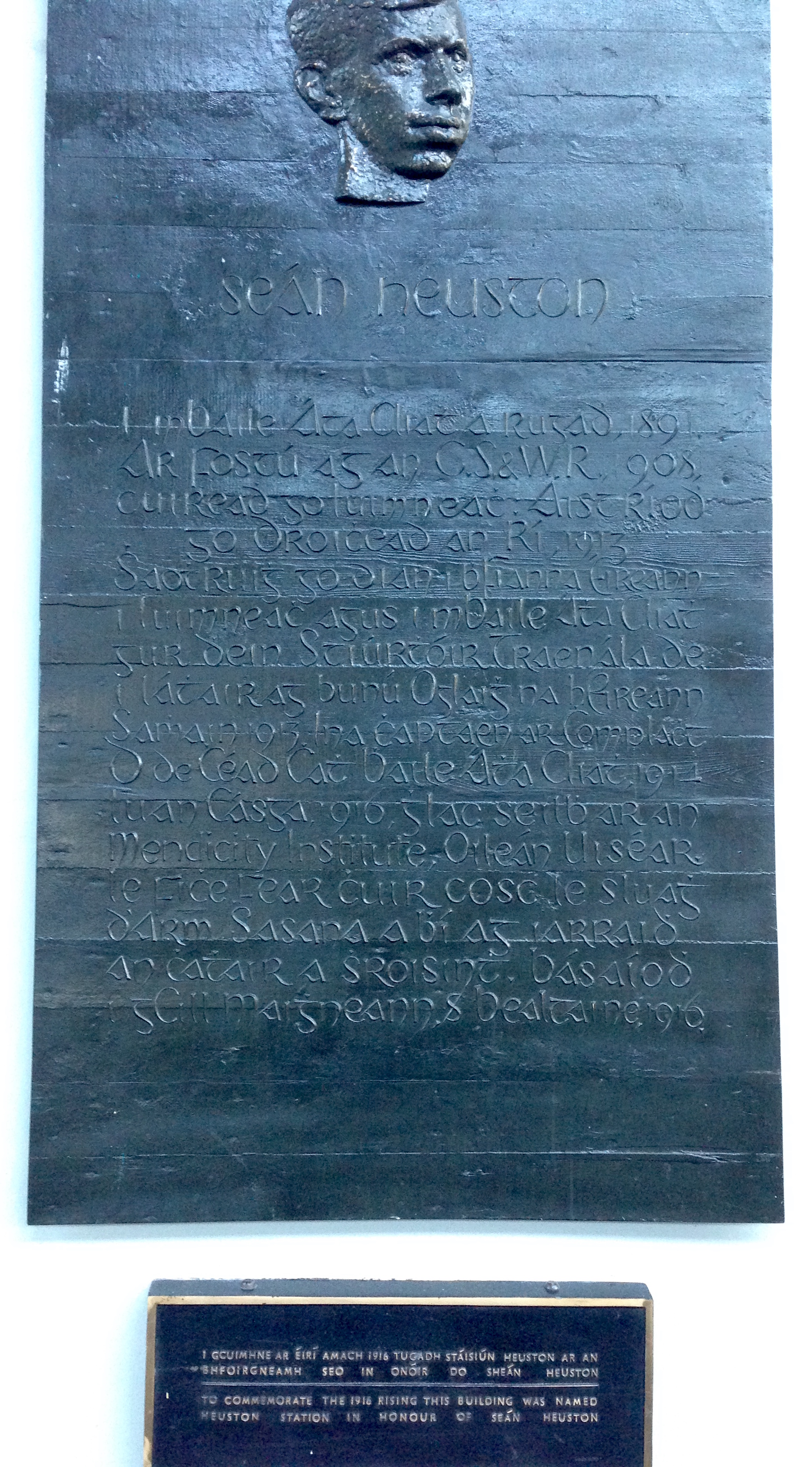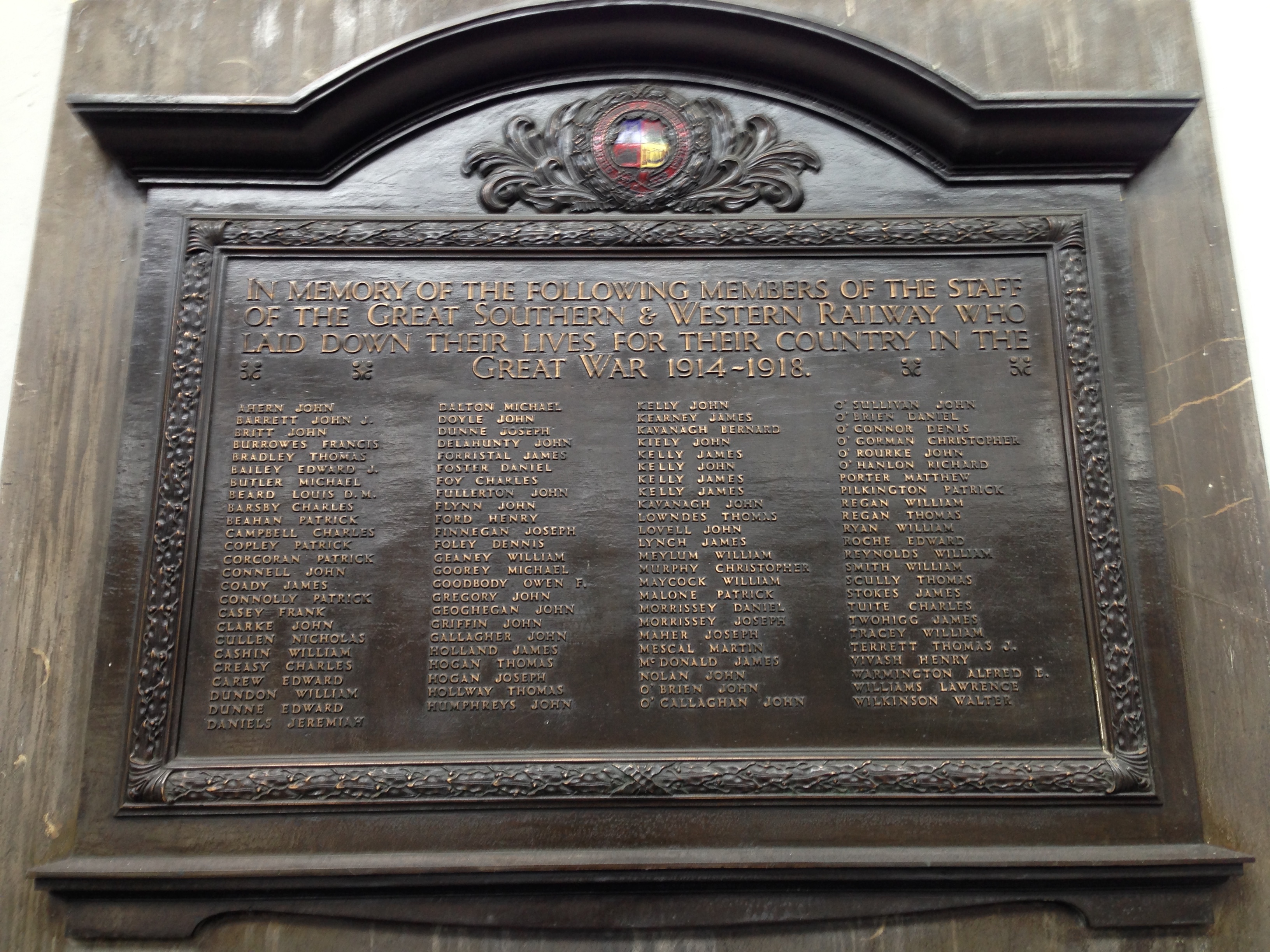The First World War & Irish Identity
I don’t often take the train from Cork to Dublin, but recently I did and for the first time I paid close attention to the memorial plaques along one wall of Heuston Station. In their own way, they encapsulate the debates over Irish identity and historical memory.
 Formerly Kingsbridge Station, its name changed as part of the fiftieth anniversary of the Easter Rising. The first plaque commemorates the man after whom the station is now named, Sean Heuston, Irish revolutionary and former railway clerk. It gives a brief summary, in Irish, of his life and role in the rising.
Formerly Kingsbridge Station, its name changed as part of the fiftieth anniversary of the Easter Rising. The first plaque commemorates the man after whom the station is now named, Sean Heuston, Irish revolutionary and former railway clerk. It gives a brief summary, in Irish, of his life and role in the rising.
The second plaque reproduces the text of the 1916 proclamation on three, relatively bland, metal tiles. Though I was unable to find information about its origins, it’s likely that it also put up in conjunction with an Easter Rising commemoration.
The third looks the oldest and is, I think, the most interesting. It commemorates the staff of the Great Southern & Western Railway who ‘laid down their lives for their country in the Great War’. The ambiguity is striking. What country was their country: Ireland or Britain? While the inscription does enshrine the idea of patriotic sacrifice, it leaves open the question of the nation to which that patriotism was directed.
As many as 200,000 Irishmen served in the First World War and of those about 35,000 died. However, the context of the Home Rule crisis and subsequent Easter Rising meant that their enlistment was hotly debated at the time: Unionists joined up to demonstrate their loyalty; Redmondites enlisted to show their commitment to Home Rule; and many others simply welcomed the separation money, regular pay cheques, or sense of adventure.
Staunch nationalists opposed Ireland’s participation in ‘Britain’s war’ and saw being an Irishman and fighting for Britain as an irreconcilable contradiction. This view had a long and pervasive influence on historical memory. Keith Jeffery writes that ‘the prevailing orthodoxy in nationalist Ireland is that no true Irishman could possibly have joined the British army for patriotic and legitimate Irish reasons, or even (horrible thought) for a species of British loyalty.’[1]
Even those who enlisted realized at the time that their legacy would be contested. Tom Kettle justified his participation, arguing, ‘I have written no word and spoken none that was not the word of an Irish Nationalist’.[2] Poet Francis Ledwidge, reflecting on his life and decision to join the 10th Irish Division, asked, ‘how will I be accounted for?’[3] Patrick MacGill rejected attempts to view the war through the lens of patriotism, instead saying ‘the justice of the cause which endeavours to achieve its object by the murdering and maiming of mankind is apt to be doubted by a man who has come through a bayonet charge.’[4] He puts words in the mouths of those who lie dead, asking ‘what purpose has it served?’[5]
Placing these three plaques along the same wall gives a certain parity to their subjects. We are forced to consider the Easter Rising in its European context – the First World War – and to recognize that both events raised questions of national identity. Who are we to impose a brand of patriotism on those who did not or could not speak for themselves?
_________________
[1] Keith Jeffery, ‘The First World War and the Rising: Mode, Moment, and Memory’, in Gabriel Doherty & Dermot Keogh (eds.), 1916: The Long Revolution (Cork. 2007), p.90.
[2] Tom Kettle, Ways of War (Constable & Co., London, 1917), p.72.
[3] Francis Ledwidge, ‘Soliloquy’, from The Complete Poems of Francis Ledwidge (Herbert Jenkins, Ltd., London, 1919), pp.259-60.
[4] Patrick MacGill, The Great Push: An Episode of the Great War (Herbert Jenkins Ltd., London, 1917), p.vii.
[5] Ibid.

2 thoughts on “The First World War & Irish Identity”
Memory, memorials and history are intertwined in often interesting, sometimes contradictory, and sometimes ironic ways. Your entry above, Sara does a nice job of highlighting just how complex our reading of the past can be.